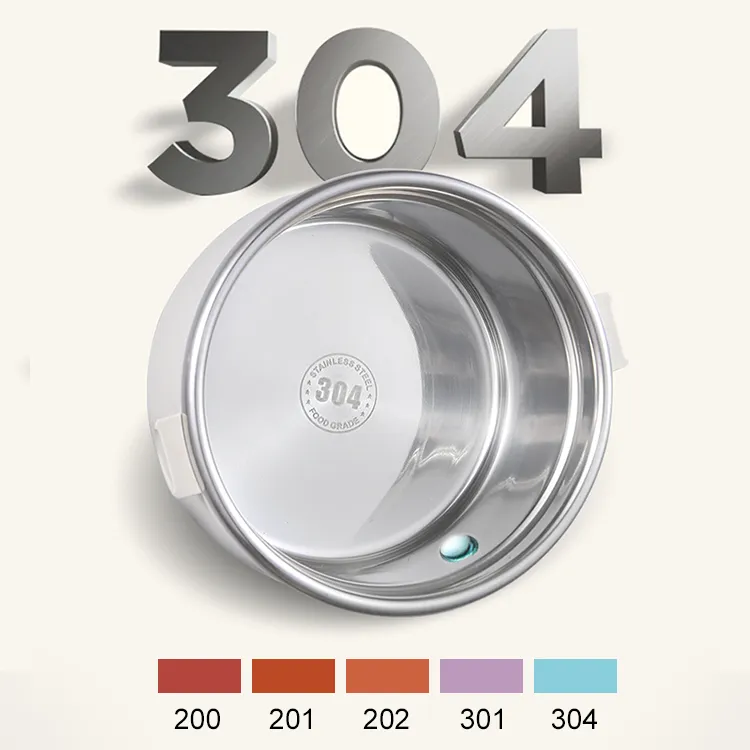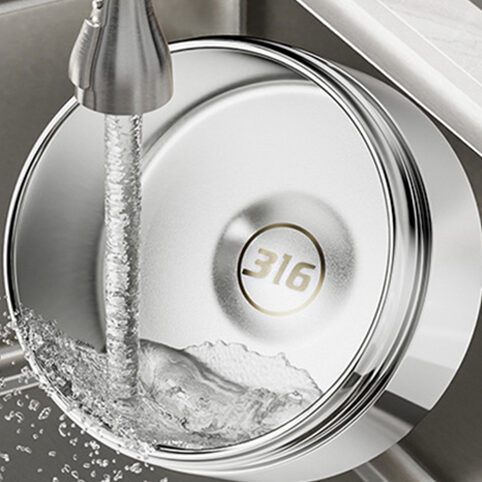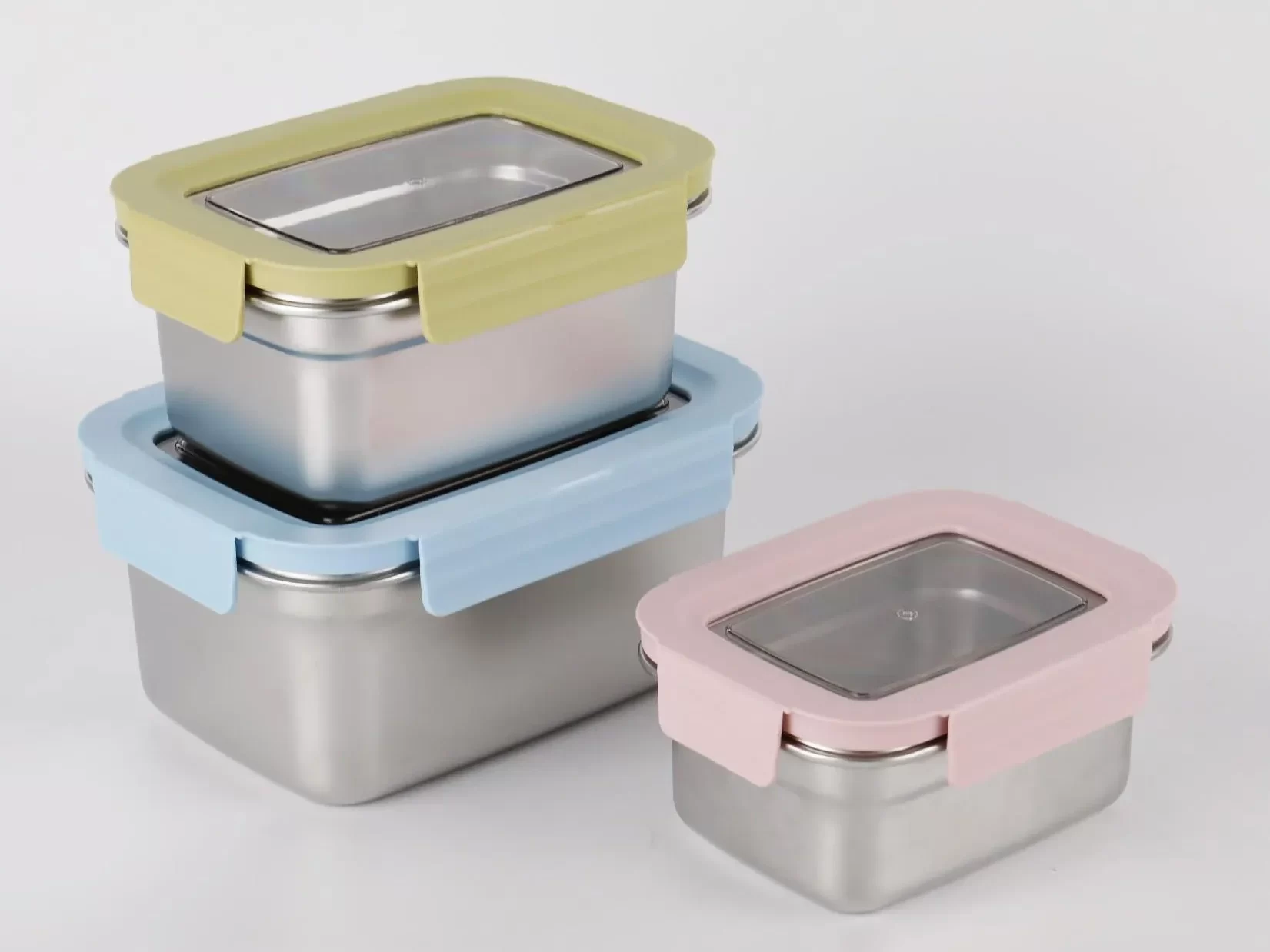
Many of you prefer to carry your boxed lunches to the office for lunch or school to save money and eat smoother and healthier. But it’s always nice to look forward to a warm lunch when you can indulge in one during a busy workday or the school day. However, most people struggle to keep their food warm in their lunch boxes, so if you want to keep your food warm while you’re out and about, Allnice will look at some practical tips and advice for keeping your food warm today!
Choosing the right lunch box
Materiais de alta qualidade
Choosing the right lunch box is crucial to eating healthy daily. Among many materials, stainless steel lunch boxes are popular for their durability, corrosion resistance, and ease of cleaning. And among the stainless steel materials, two models, 304 and 316, are the most common choices. For most people, 304 stainless steel lunch boxes are sufficient for daily needs. In ordinary home and office environments, 304 stainless steel lunchboxes offer good durability and corrosion resistance, as well as a more reasonable price. If you need to use the lunchbox in special environments, such as high salinity environments, camping or field activities, etc., or need to frequently heat food, then the 316 stainless steel lunchbox will be more suitable for your needs. Its greater resistance to corrosion and heat ensures that the lunchbox can be used for a long time in these environments without damage.


Insulated Design
Many stainless steel lunch boxes will feature a double-layer design and vacuum insulation technology, which can greatly extend the time your food stays warm. There is also the excellent insulation effect of the air trapped inside the double-layered structure of the lunch box, while the vacuum insulation reduces heat conduction so that the food can stay warmer for longer.
Preheating Tips
Preheating Lunch Boxes
We can wait until just before we have to go to school or work, and we can preheat the lunchbox with hot water before putting the food into it. Pour hot water into the lunchbox, let it sit for a few minutes, and then pour it out. This will warm up the inside of the lunchbox, which will help keep the food warm.
Preheating food
When it’s time to go out make sure that the food has been heated to meet this best temperature before putting it in the lunch box. You can reheat food in the microwave or on the stovetop to make sure it remains warm at lunchtime.
Use insulated accessories
Insulated bag
Having an insulated bag for your lunchbox can be an effective way to keep your lunchbox warmer for longer. Insulated bags are usually lined with insulating materials that can help maintain the temperature inside the lunchbox, keeping the food warmer for longer.
Thermos
For liquid foods, such as soup or coffee, using a thermos or hot water bottle can be an ideal option. Thermos flasks are usually designed with double-wall construction and vacuum insulation to effectively keep liquids warm.
Food Preparation Tips
Storing food in layers can help prevent heat loss. For example, keeping entrees, side dishes, and soups in separate containers can effectively reduce heat exchange between foods, thus maintaining the temperature of each food. Wrapping food in insulating material is also an effective technique for keeping food warm. Aluminum foil and insulating cloth can be wrapped around the outside of the food to keep it warm by reducing heat loss.
Common Mistakes and Solutions
Mistake 1: Food cools down too quickly usually due to poor sealing of the lunch box or insufficient heating of the food. Make sure you choose a lunch box with a good seal and heat the food to the desired temperature before placing it in the lunch box.
Mistake 2: Poor sealing can lead to heat loss and affect insulation. When using a lunch box, make sure the lid can be sealed completely to avoid any heat loss.
Conclusão
Keeping the food in your lunchbox warm not only enhances the dining experience but also ensures that you enjoy a tasty meal during your busy work or study schedule. Choosing high-quality lunchboxes, using the right preheating techniques and heat-retaining accessories, and avoiding common mistakes can help you keep your food warm at every meal. We hope these tips will help you enjoy warm meals better in your daily life.

